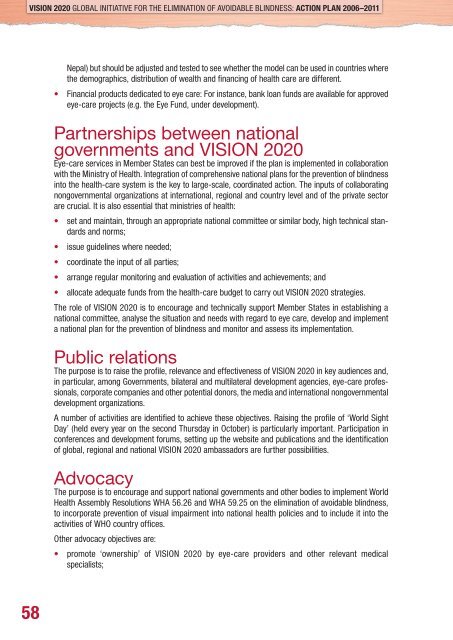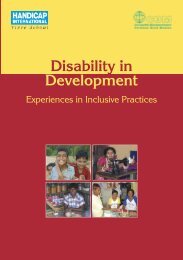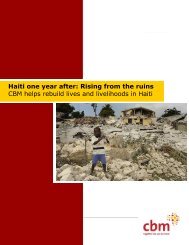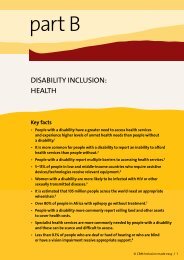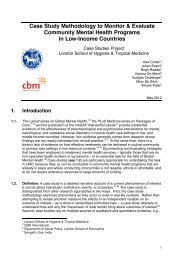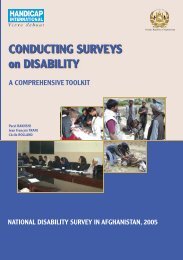Vision 2020 - World Health Organization
Vision 2020 - World Health Organization
Vision 2020 - World Health Organization
Create successful ePaper yourself
Turn your PDF publications into a flip-book with our unique Google optimized e-Paper software.
VISION <strong>2020</strong> GLOBAL INITIATIVE FOR THE ELIMINATION OF AVOIDABLE BLINDNESS: ACTION PLAN 2006–2011<br />
Nepal) but should be adjusted and tested to see whether the model can be used in countries where<br />
the demographics, distribution of wealth and fi nancing of health care are different.<br />
• Financial products dedicated to eye care: For instance, bank loan funds are available for approved<br />
eye-care projects (e.g. the Eye Fund, under development).<br />
Partnerships between national<br />
governments and VISION <strong>2020</strong><br />
Eye-care services in Member States can best be improved if the plan is implemented in collaboration<br />
with the Ministry of <strong>Health</strong>. Integration of comprehensive national plans for the prevention of blindness<br />
into the health-care system is the key to large-scale, coordinated action. The inputs of collaborating<br />
nongovernmental organizations at international, regional and country level and of the private sector<br />
are crucial. It is also essential that ministries of health:<br />
• set and maintain, through an appropriate national committee or similar body, high technical standards<br />
and norms;<br />
• issue guidelines where needed;<br />
• coordinate the input of all parties;<br />
• arrange regular monitoring and evaluation of activities and achievements; and<br />
• allocate adequate funds from the health-care budget to carry out VISION <strong>2020</strong> strategies.<br />
The role of VISION <strong>2020</strong> is to encourage and technically support Member States in establishing a<br />
national committee, analyse the situation and needs with regard to eye care, develop and implement<br />
a national plan for the prevention of blindness and monitor and assess its implementation.<br />
Public relations<br />
The purpose is to raise the profi le, relevance and effectiveness of VISION <strong>2020</strong> in key audiences and,<br />
in particular, among Governments, bilateral and multilateral development agencies, eye-care professionals,<br />
corporate companies and other potential donors, the media and international nongovernmental<br />
development organizations.<br />
A number of activities are identifi ed to achieve these objectives. Raising the profi le of ‘<strong>World</strong> Sight<br />
Day’ (held every year on the second Thursday in October) is particularly important. Participation in<br />
conferences and development forums, setting up the website and publications and the identifi cation<br />
of global, regional and national VISION <strong>2020</strong> ambassadors are further possibilities.<br />
Advocacy<br />
The purpose is to encourage and support national governments and other bodies to implement <strong>World</strong><br />
<strong>Health</strong> Assembly Resolutions WHA 56.26 and WHA 59.25 on the elimination of avoidable blindness,<br />
to incorporate prevention of visual impairment into national health policies and to include it into the<br />
activities of WHO country offi ces.<br />
Other advocacy objectives are:<br />
• promote ‘ownership’ of VISION <strong>2020</strong> by eye-care providers and other relevant medical<br />
specialists;<br />
58


